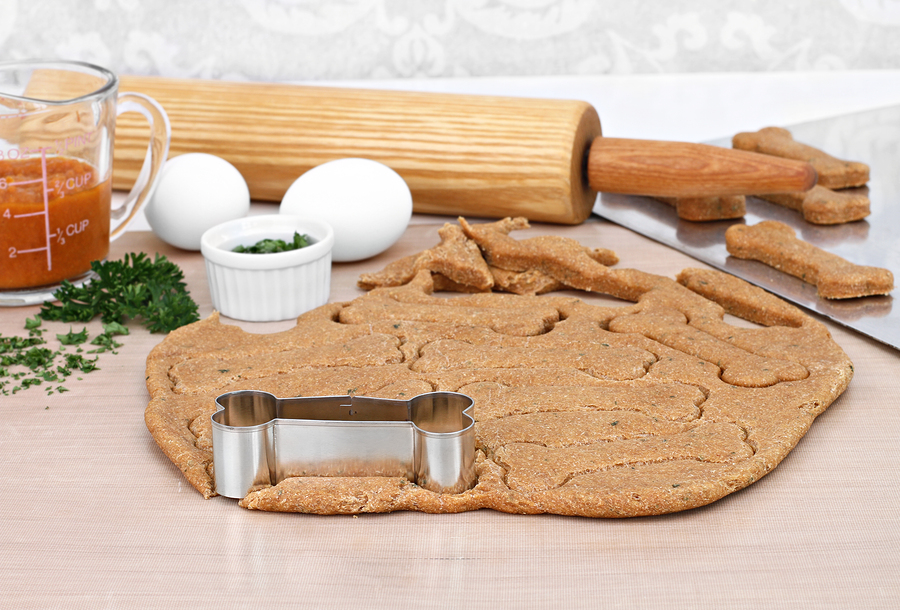
This post may contain affiliate links. We are compensated for referring customers to our affiliate partners.
Choosing to make your dog’s food from home is a great way to ensure your dog is the healthiest dog food around. However, much like with anything else, there are a lot of myths surrounding how to make your dog’s food healthy and safe for your pet.
So before you head off into the kitchen, here are a few myths that need debunking first:
MYTH 1: Using fresh foods will be able to meet my dog’s needs if I vary the diet enough
There is some real basis for this point of view as fresh foods are much more bioavailable than those made with highly processed ingredients. Additionally, when a dog owner is able to prepare food at home, they will know exactly what it going into their dog’s food. However, even diets that are based on wholesome ingredients can still come up short when it comes to a variety of vitamins and minerals. Make sure to do a little research and consider how you can ensure that your homemade dog food will meet your pet’s nutritional needs.
MYTH 2: An additional multivitamin will fill in any nutritional gaps
The important question here is: which kind of multivitamin and with which diet? Any unsupplemented homemade diet will end up low in some nutrients and adequate or high in others. However, since there is no standard formulation for what is included in human multivitamins so they can often vary greatly in what is included and what isn’t.
Even choosing a multivitamin made for dogs doesn’t necessarily solve the issue either. Often these vitamins contain a very low level of nutrients because companies assume they will be added to a commercial brand of dog food and so are unlikely to provide the amount of supplementation needed for a homemade dog food. That is why it is so important that you understand your dog’s nutritional needs and work out a way to balance it out.
MYTH 3: I read human nutrition books and apply the same principles with my dog’s food
Unfortunately, this is a rather common assumption. However, a human’s nutritional needs and a dog’s nutritional needs are quite different. In order to ensure dietary balance, try to aim for around 30 t0 35 percent of total calories from fats, 30 percent from protein, and the rest from complex carbohydrates.
MYTH 4: Adding yogurt to my dog’s food will ensure they get enough calcium in their diet
Dogs need a pretty high level of calcium that yogurt alone cannot provide. For example, a 75 pound dog needs around 1,840 mgs of calcium a dog. In order for a dog to get that amount from yogurt, you would need about 40 cups of plain yogurt to do so. For this reason, it is always necessary for you to add calcium supplementation to your dog’s food.
MYTH 5: My dog has loose stools so I should cut down on their fiber
Fiber is a very important dietary component and the kind of fiber used counts a lot more than the actual amount. If your dog has loose stools while on your homemade diet, you should switch to bland meals or cut back on the amount of food by around 30 percent for a day or so and watch out for other symptoms that could indicate an illness of parasites. If the problem does not seem to be clearing up in a couple days, you should consult your veterinarian.
MYTH 6: I use a lot of veggies in my dog’s food because they are so beneficial
The role that vegetables play in a canine has been debatable. Some believe that adding them is inappropriate since dogs are carnivores and do not need to consume plant matter. However, other have emphasized that adding vegetables and fruits can boost essential nutrients and add phytochemicals that could provide protection from disease.
Unlike with their feline counterparts, dogs systems are much more accommodating when it comes to plant matter which allows vegetables to offer a lot of health benefits for your dog. However, that doesn’t mean that all vegetables will be beneficial to your dog. Some vegetables, such as tomatoes, eggplants, and peppers, can interfere with the absorption of minerals and even aggravate inflammation. Dark leafy greens should also be limited as their high level of oxalate can cause bladder stones. Vegetables like green beans and carrots are a rather safe bet though and with research you can find plenty of other options that will sit well with your dog’s stomach.
MYTH 7: A raw dog food diet is superior to one that is cooked
First, it is important to realize that raw diets can vary greatly in type and nutrimental balance. This kind of diet has become quite popular in recent years and there are certainly dogs out there that thrive on them. However, not all dogs do. Much like with a cooked diet, it is all about having the proper formula. A raw diet does have its drawbacks along with its own set of benefits and will not be suitable for every dog.
If you are planning to try the raw dog food approach, make sure to do your homework first and so that your dog will get the optimal nutrition. Not only should you do some research among the various raw communities on the internet, but you should also talk with your dog’s veterinarian and nutritionist who will know your dog’s nutritional needs best.
